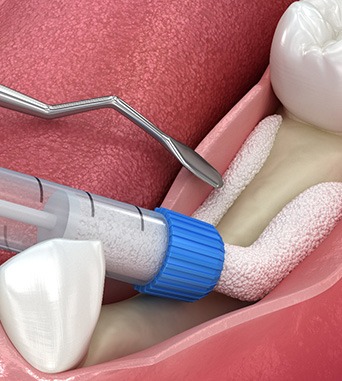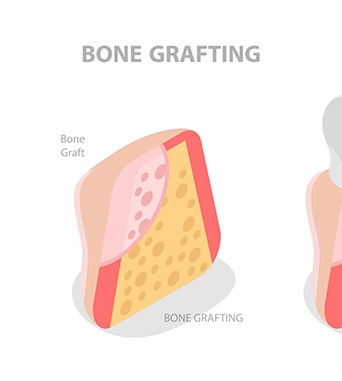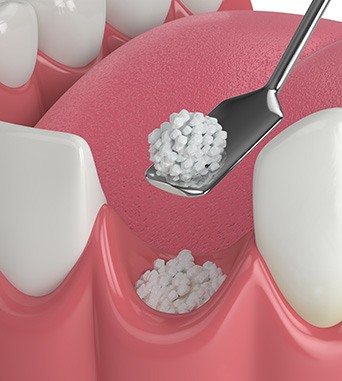Dental Bone Grafting Lancaster
The First Step Toward Your New Smile

Every house needs a strong foundation if it’s going to stand the test of time, and your smile is no different! One of the most important factors when replacing missing teeth with dental implants is the strength and integrity of the supporting jawbone, and bone grafting in Lancaster can ensure your new smile looks and feels great for decades to come. You can learn more about why you might need this procedure at Conestoga Oral Surgery below, or if you have questions, you’re always welcome to give our team a call.
Why Choose Conestoga Oral Surgery for Bone Grafting?
- We are the Leading Oral Surgery Practice for Implant Dentistry in Central Pennsylvania Since 1985!
- Hundreds of Successful Bone Grafts Performed Each Year
- Enjoy Peace of Mind with Our Comprehensive Implant Warranty
What’s Bone Grafting?

Conceptually, a bone graft is relatively simple. Using a minor surgery, we take bone from somewhere else (another part of a patient’s body, donated tissue, or a synthetic grafting material) and place it where the jawbone may be too weak or brittle to safely support a dental implant.
The graft naturally encourages the growth of new, healthy bone in the area, increasing both strength and density. This provides the ideal environment to position a dental implant that will remain stable and healthy. Without the graft, the implant may quickly become loose after surgery and never fully integrate with the bone. The procedure can usually be completed in a single appointment, while healing may require a few months before the graft is ready for implants.
Bone Grafting After Tooth Loss

When a tooth goes missing, the jawbone in the area naturally starts to resorb, or shrink and atrophy. That’s because it isn’t receiving stimulation from the teeth biting and chewing, causing the body to redirect nutrients away from it to other areas it deems more essential. This is often the case for patients who have been without teeth for a long time. A bone graft can reverse years of bone loss in relatively little time.
Bone Grafting After Tooth Extraction

If a tooth is failing, whether it’s due to decay, gum disease, or trauma, we may recommend extracting it and performing a bone graft at the same time. This will help reinforce the tissue in the immediate area and allow the graft to take hold while someone’s mouth is healing, which is very efficient! It also means that as soon as the jaw is ready, we can restore the tooth with an implant. This approach is much faster compared to doing the procedures one after another.
What Are the Benefits of Bone Grafting?

The biggest benefit of bone grafting is that it adds certainty to the dental implant process. With it, we can ensure your new teeth will be secure and stay strong for many years to come. Plus, increasing the thickness of the jawbone can help your remaining teeth as well, giving them more stability to lower the risk of future tooth loss.
A healthy jawbone also has aesthetic benefits independent of the teeth, as it provides support for the skin of the lips and cheeks to prevent the formation of fine lines and wrinkles, plus it can add height to the face to create a more attractive, healthy, and symmetrical appearance.
